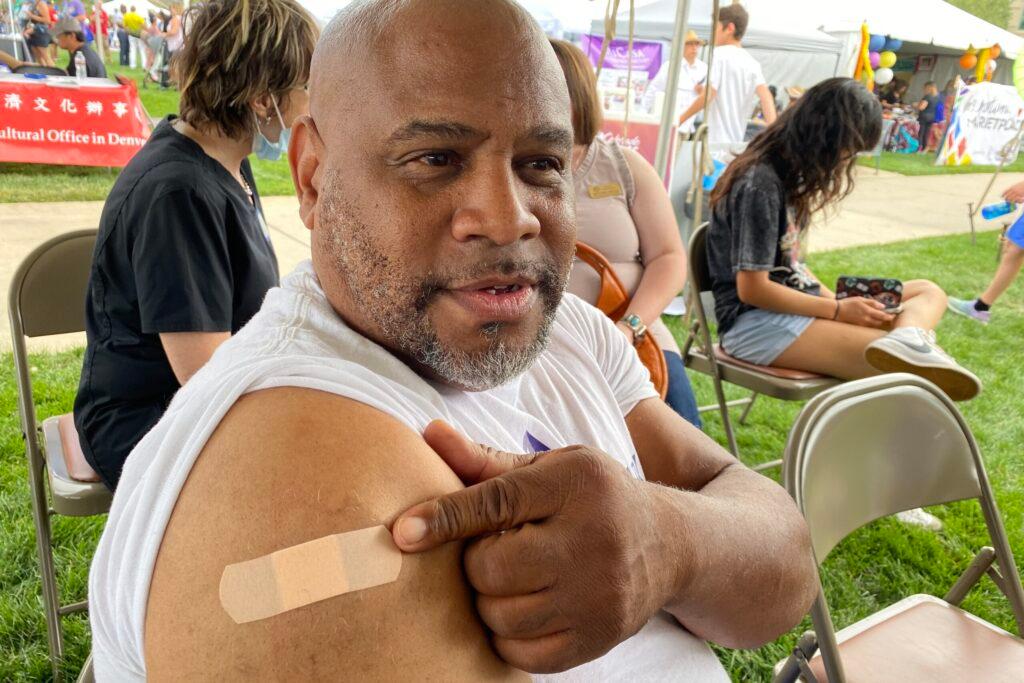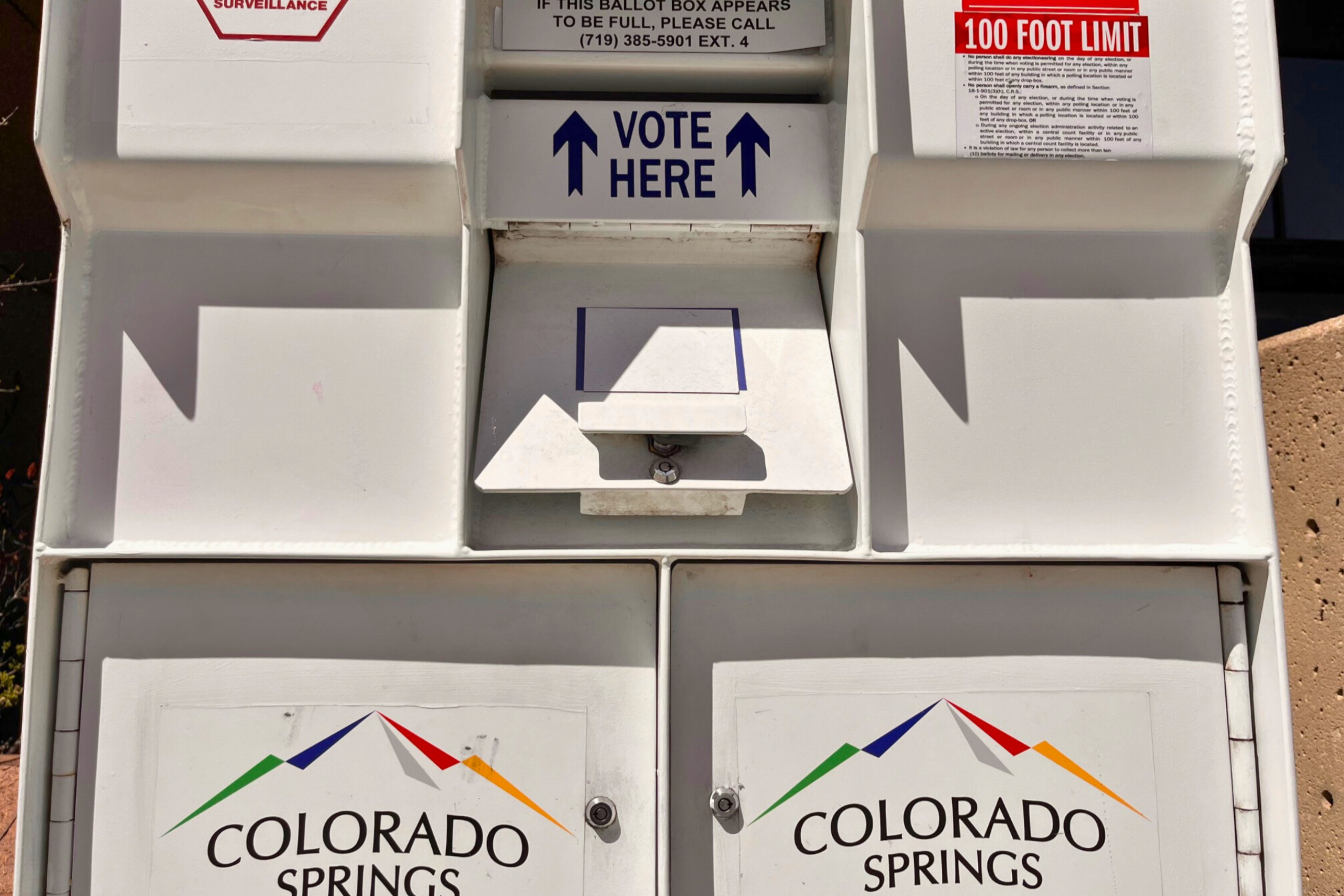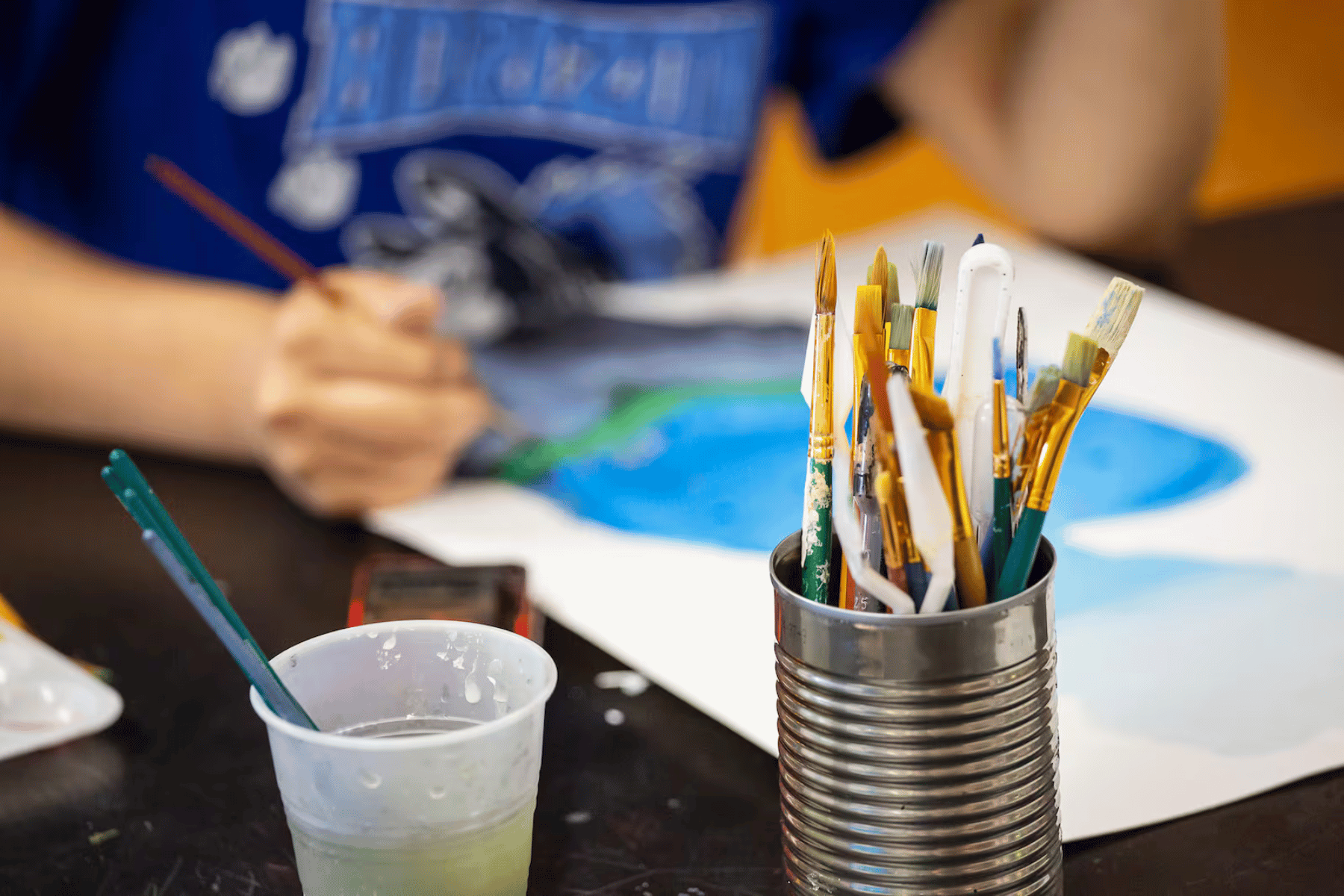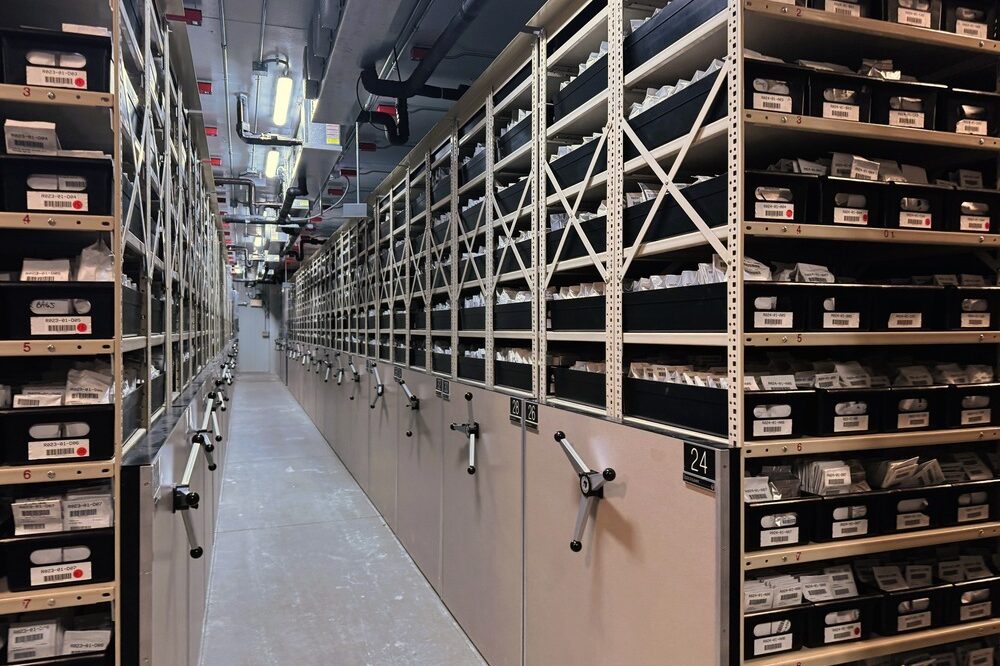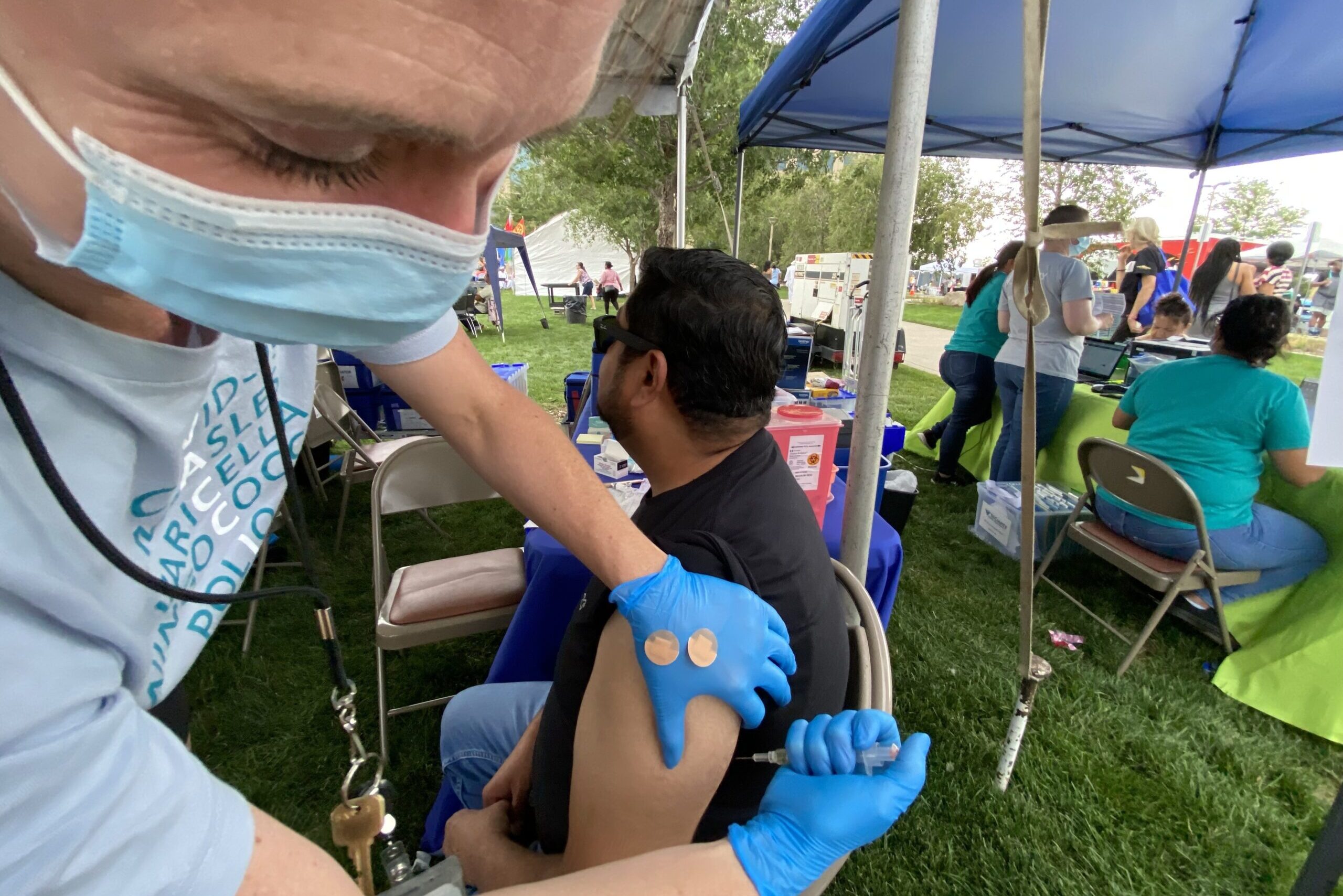
It’s the Global Fest in Aurora, where people wait in lines for food from vendors from as far afield as Nigeria and Vietnam.
On a stage, a group of young girls in colorful dresses perform a traditional dance from Mexico.
Nearby, a nurse under a tent asks a patient, “You want your right arm or your left arm?”
It’s the third fall of the pandemic, and the push is on to get more COVID-19 shots into arms. For two years, this festival was virtual. Now that it’s back, the vaccine tent is bustling.
With the help of a translator, a woman named Josefina Quevedo said in Spanish that she just got a shot. It’s her fourth shot and second booster.
Quevedo is 72 and lives in Aurora. She said her husband Antonio was unvaccinated and caught the virus at a party a year ago.
Everybody there caught COVID-19. Antonio died, she said.
On her phone, she shows me a photo of her husband. He has short hair and wears a floral shirt. His death convinced her entire family to get vaccinated.
“Todos, todos!” Quevedo said emphatically.
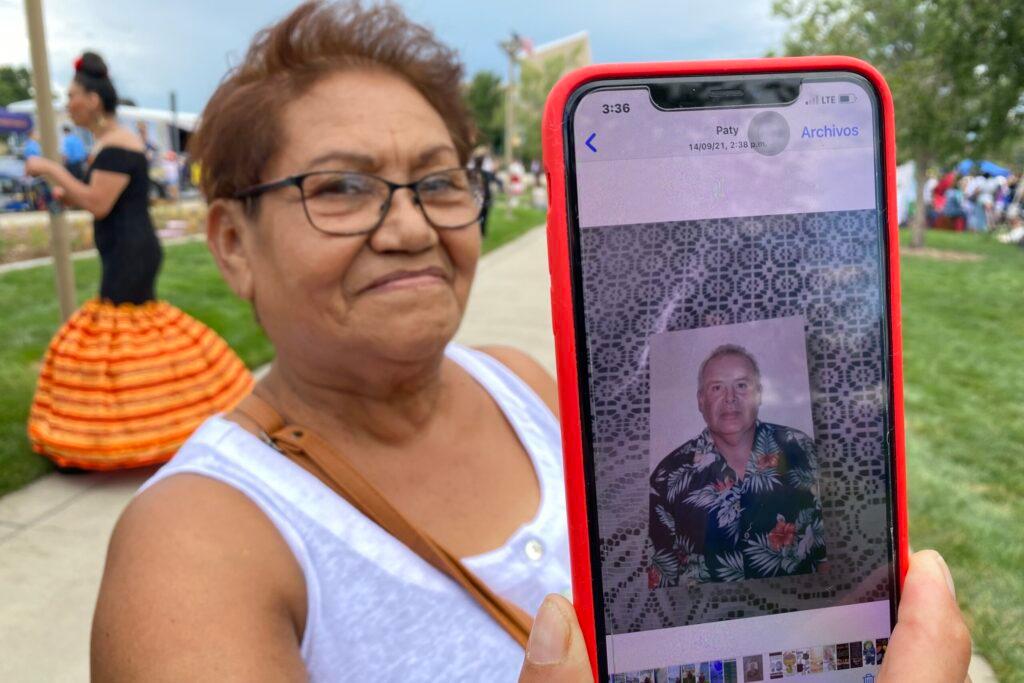
Coloradans are all over the map when it comes to getting COVID-19 vaccines. And a renewed push from the federal government is on the horizon.
Soon after Labor Day, the Biden administration aims to offer the next round of coronavirus booster shots to those 12 and older.
In the last two winters, the country has seen considerable surges, so the campaign hopes to limit severe illness and death from the virus.
The vast majority of Colorado’s oldest residents have now gotten two doses, plus a booster. But just a little more than half of the entire population can say that. And big gaps persist in some groups, particularly Latinos.
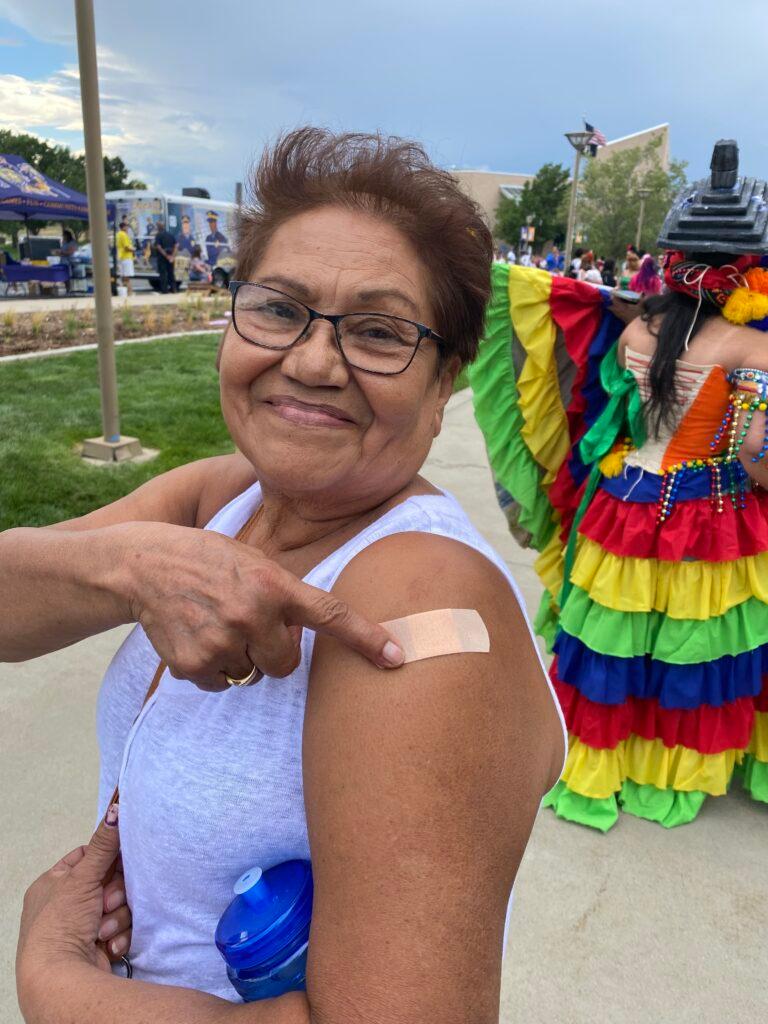
“We, the Latino community in Colorado, we are still vaccinated at less than 50 percent,” said Julissa Soto, an independent consultant on Latino healthcare representing Colorado Access, a nonprofit healthcare company.
Fewer, she says, have boosters. Health department data, on the state’s dashboard, backs her up.
“This is not equity. This is not equality,” Soto said.
Dr. Steve Federico is concerned about that too. And says the picture is growing more complex.
“It is obviously a very different phase of the pandemic,” he said.”
Federico is director of general pediatrics and school and community programs at Denver Health. He says there’s better community immunity because so many people have either been vaccinated or caught the virus. And since the timing of those things is variable, the state’s entire population isn’t susceptible to COVID all at once.
“So that's really reassuring,” Federico said. “We are less likely to see massive peaks the way we've seen up until now.”
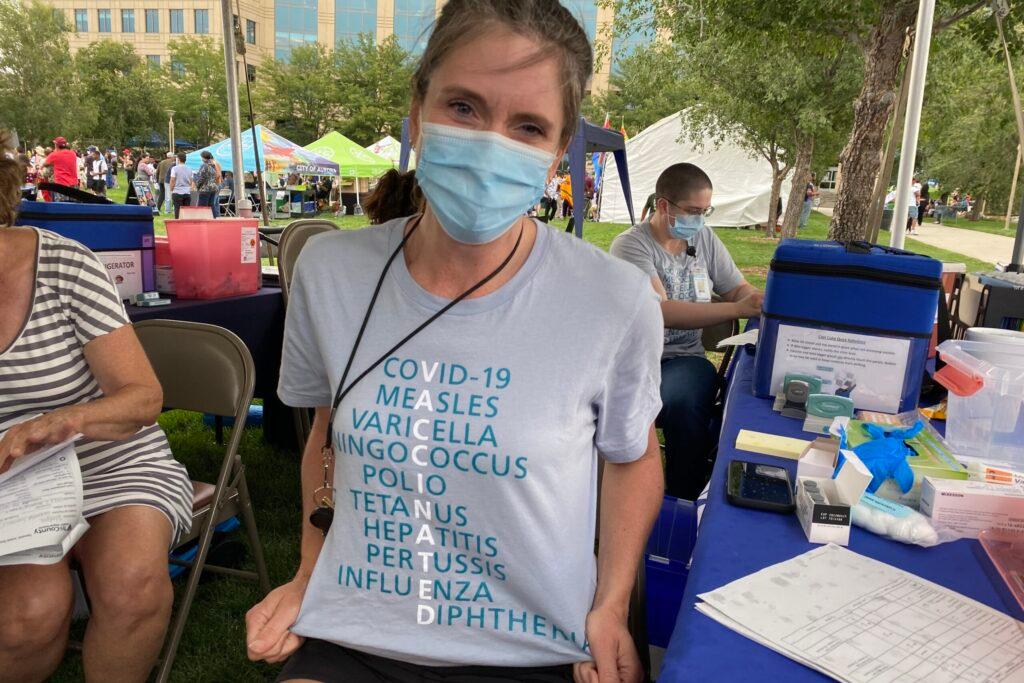
Health officials hope a new booster campaign will energize sluggish vaccination numbers.
A look at the state’s vaccination dashboard shows both the progress and the challenges of Colorado’s campaign. Nearly 72 percent of Coloradans have gotten two vaccine doses. Research has shown vaccine effectiveness wanes, hence the recommendation for boosters; but just 55 percent have gotten at least one booster.
Those older than 65, the group most likely to die from the virus, are highly vaccinated: 90 percent have the first two doses, more than three quarters have at least one booster.
But it’s a different story for Colorado kids 5 to 11: just 38 percent have had two vaccine doses. In the next oldest group, those 12 to 17, just 40 percent have two doses plus a booster.
Federico said he thought the numbers would improve with the new booster campaign.
“I think that will pick up in the fall,” he said.
Denver Health plans to make the new boosters available to tens of thousands of students in school-based Denver Public School clinics along with flu shots.
“The timing coincides really nicely,” Federico.
But the recent pace of vaccination has been sluggish.
The week of Aug. 14, a little more than 20,000 Coloradans got vaccine shots. That’s a quarter of the weekly number from a year ago and a tenth of what was administered in the midst of the big surge late last fall.
Federico said a new, troubling variant could arrive at any time. So it’s key, he said, “for people to stay vigilant and when appropriate to get boosters to continue to keep the disease burden and the disease rate as low as possible in the community.”
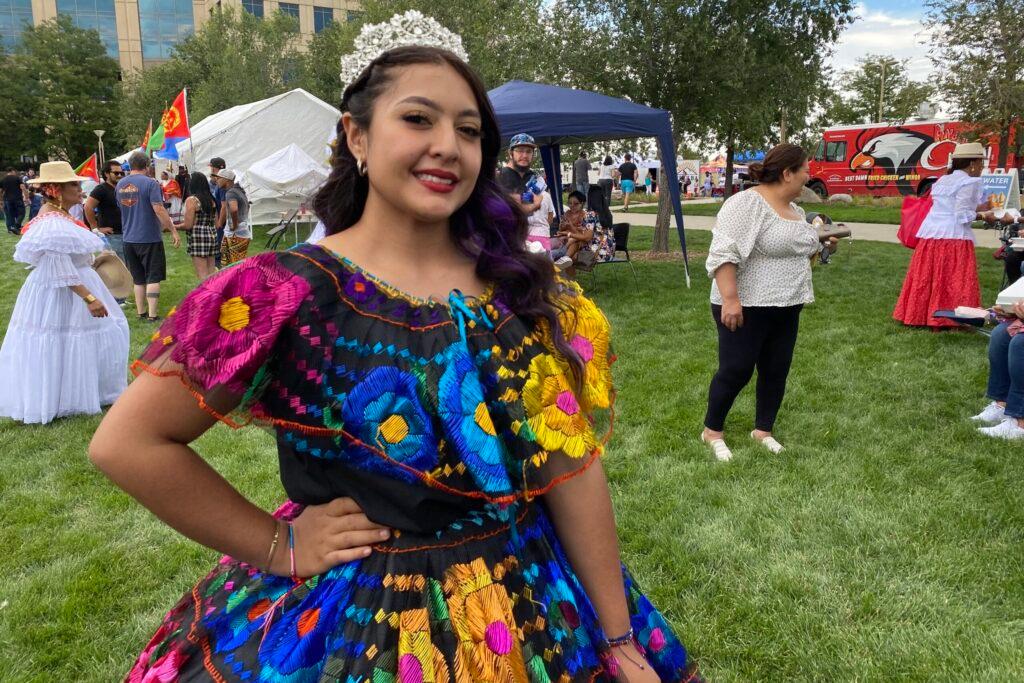
Meeting people where they're at — from personal text reminders to providing vaccines at public gatherings — is a core strategy.
Back at the Global Fest, 14-year-old Jacqueline Morales stood by the vaccine tent, wearing a silver crown. She was just in a modeling contest. She proudly showed off her dress.
It has intricate embroidered blue, gold and pink flowers.
“Chiapas, from Mexico,” she said with a smile. She said she is vaccinated.
“I decided to get it, to protect my family from COVID and also to protect myself. My family actually had COVID because we didn't get it,” she said.
The fight to get more people like her vaccinated has grown more multi-faceted. Soto, the health consultant, personally sends out texts to remind people who come to the clinics for their next shot.
“So, it's pushing them. I text them. I text everyone who comes here, I get their numbers. And then I text them and I say, “Welcome.”
One of the people who got one of those texts is 55-year-old Jose Hernandez. He came here for a second booster. It’s “very important for me, for my community when I have my shot, and especially as for my responsibility, for my health,” he said, while asking his son Joshua for some help with Spanish translation.
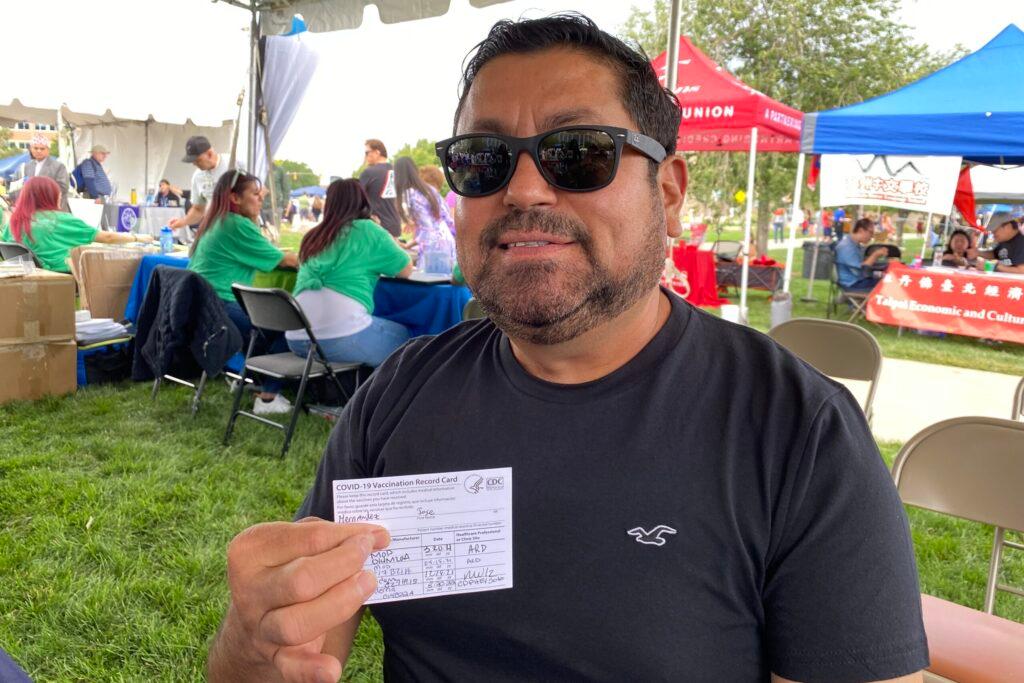
And Hernandez took advantage of another valuable approach here. While the state health department ran this COVID-19 vaccine clinic, Tri-County Health is here too offering routine vaccines.
Hernandez got vaccine shots for MMR and varicella. He said it felt good to get multiple vaccine doses all at once.
“Feeling good. Very good. Everything is fine,” he said.
Becca Miles, a Tri-County Nurse, said offering multiple vaccines in one popular location just made sense.
“It's better service. Any opportunity we have to get people vaccines who want them is fantastic,” Miles said.
Denver resident Jordan Jefferson showed off his Band-Aid after getting a COVID shot. He’d like more tents like this out in the community and said it’s a major improvement from going to the doctor’s office.
“Gotta get out in the public more, do more of these kind of events, where it is free and they feel comfortable. And it's a lot of people around,” he said. “Out here it's comfortable. It's nice. It's a breeze, socializing, you got food. It's more freedom.”
